Primary Source Set
Textile Workers & Labor Movements
The textile industry was a major part of North Carolina’s economy in the 20th century. Beginning in the 1920s, low pay, long hours, and dangerous working conditions led textile workers to organize into labor unions, which helped them negotiate for changes. This set uses photographs, newspaper clippings, and propaganda materials to build the story of one of North Carolina’s most famous labor movements—the Loray Mill strike of 1929—and the resurgence of unions in popular culture 50 years later.
Time Period
1920s-1930s and 1970s
Grade Level
8 – 12
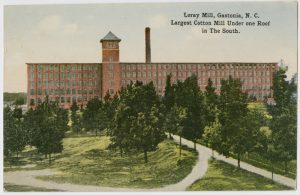
Loray Mill Postcard
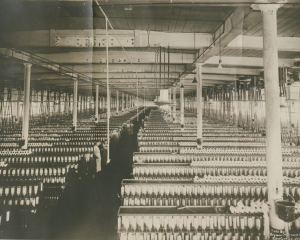
Loray Mill Spinning Room [circa 1935]
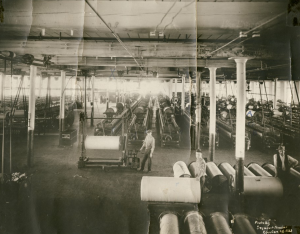
Loray Mill Beam Twisting Room [circa 1935]
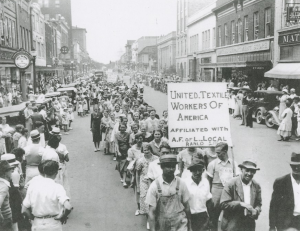
United Textile Workers of America Marching [circa 1929]
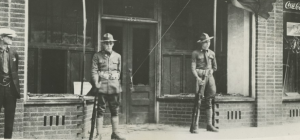
National Guardsmen Guarding Striking Workers' Food Supply [April 19, 1929]
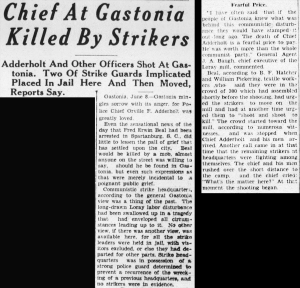
"Chief at Gastonia Killed by Strikers,” The Cleveland Star [June 10, 1929]
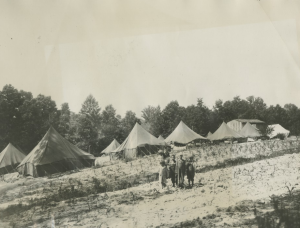
Striking Workers' Tent Colony [July 12, 1929]
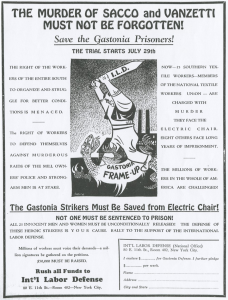
International Labor Defense Fundraising Poster [July 29, 1929]
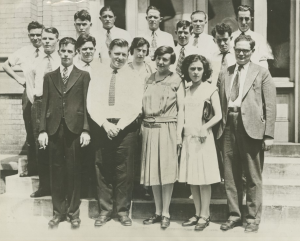
Strikers on Trial for Murder of Police Chief Aderholt [September 14, 1929]
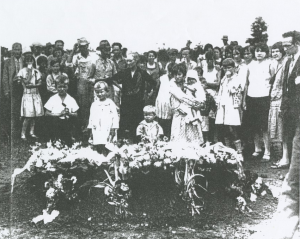
Ella May Wiggins' Funeral [September 20, 1929]
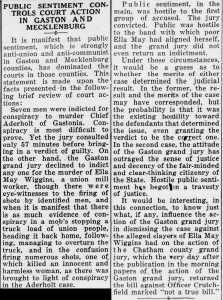
"Public Sentiment Controls Court Action in Gaston and Mecklenburg," The Chatham Record [October 31, 1929]
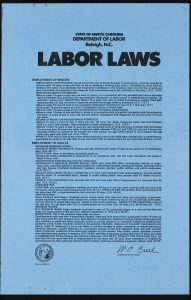
North Carolina Labor Laws [1973]
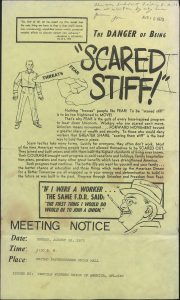
The Danger of Being Scared Stiff [August 10, 1973]
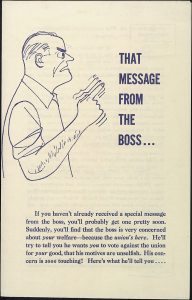
That Message from Your Boss [October 9, 1973]
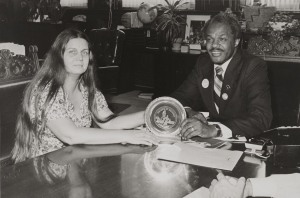
Crystal Lee Sutton and Marion Barry
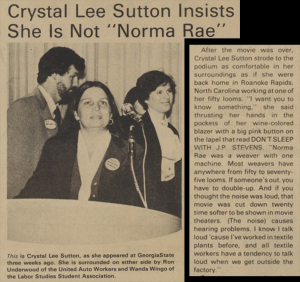
"Not Norma Rae," Signal [April 8, 1980]
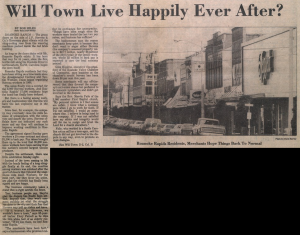
"Will Town Live Happily Ever After?" Greensboro Daily News [October 23, 1980]
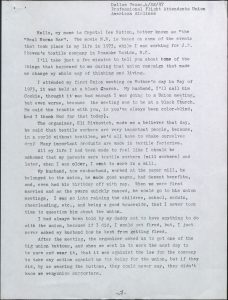
Crystal Lee Sutton's Speech to the Professional Flight Attendants Union [April 22, 1987]
Background
In the 1920s and ‘30s, North Carolina was one of the largest producers of textiles in the country. This was partially due to the state’s natural resources, like cotton, and the demand for uniforms during World War I (1914-1918). Textile companies were also interested in the workers of North Carolina, who they could pay very low wages. As a result, many North Carolinians worked in textile mills that spun cotton into fabric for making clothes, blankets, towels, and other apparel products. Most of these workers faced long hours and dangerous working conditions among the machinery and fabric dyes in addition to low pay. However, the textile industry was so large that in many towns, mills were one of the few options for work. The challenge to find better jobs was made even harder after the Wall Street Crash of 1929 and the Great Depression that followed.
One of the ways that textile workers were able to petition for higher pay, fewer hours, and better working conditions was by joining a labor union and going on strike. A labor union is an organization of workers who use their combined power to negotiate for better pay and working conditions. If the workers are unable to come to an agreement with their boss, they may use a strike as a tool to add pressure. A strike is a protest where all of the workers stop doing their jobs, forcing a business to temporarily shut down.
One of the most famous strikes in North Carolina was at the Loray Mill in Gastonia in the summer of 1929. The Loray Mill was then one of the largest cotton mills in the South, employing about 5,000 people. The strike began with help from Northern union organizers Fred Beal and Ellen Dawson, who advocated for the National Textile Workers Union in Gastonia (NTWU). The NTWU’s association with the Communist Party led many townspeople to feel distrustful of the union, and members of the National Guard were called in by the Governor to mitigate violence. However, on June 7, 1929, local police visited the strikers’ tent camp, and Police Chief Aderholt was shot and killed. Several strikers were arrested on murder charges, including Beal. This led to surges of violence between strikers and anti-Communists, including the kidnapping of several workers and the assassination of Ella May Wiggins, a mill worker who wrote and performed ballads about working conditions. After Wiggins’ death, the strike ended without bargaining, leaving many of the area wary of labor unions.
Textile worker unions struggled to get a foothold in North Carolina after the Loray Mill strike. In 1934, when union membership rose under the federal protections of the F. D. Roosevelt administration, some 300,000-500,000 textile workers all along the East Coast went on strike. Though many from North Carolina participated, they did not receive increased pay or improved working conditions when the strike ended (though some improvements were made in the North, where unions were more powerful). As with the Loray Mill strike, this led many people to give up hope in labor unions. Finally, in 1947, North Carolina passed a right-to-work law, which greatly limits unions’ power.
Then, in the 1970s and ‘80s, unions reappeared in the public consciousness through the story of Crystal Lee Sutton, which was popularized in the fictional film Norma Rae (1979). Sutton was a textile worker in the J.P. Stevens mill in Roanoke Rapids, N.C. Frustrated by the pay and working conditions, Sutton helped build a coalition of Black and white textile workers who wanted to unionize. Though she was fired in 1978 for her efforts, the Amalgamated Clothing and Textile Workers Union (ACTWU) began to represent workers at the plant, and the union was able to secure a new contract and back pay for workers in 1980. Though Sutton said that Norma Rae does not represent her true life story, she did credit it for “teach[ing] people about unions.”
Discussion Questions
Look at the photos of the outside and inside of the Loray Mill. How would you describe it? Have you ever seen a workplace like this before?
What are some of the reasons that mill workers might want to unionize? Why might some workers not want to unionize? What risks did workers face in joining unions?
Both the Loray Mill strike of 1929 and the J.P. Stevens strike in the 1970s were led by women (Ellen Dawson and Ella May Wiggins in 1929, and Crystal Lee Sutton in 1973). Why were women able to successfully take on leadership roles in these movements in decades when they had fewer civil liberties than men?
Take a look at the two examples of pro-union propaganda, “The Danger of Being Scared Stiff” and “That message from Your Boss.” What do you think about these materials? Are they convincing? Why or why not?
Compare “Public Sentiment Controls Court Action in Gaston and Mecklenburg,” from 1929 and “Will Town Live Happily Ever After?” from 1980. Both articles talk about townspeople’s opposition to labor unions after the two strikes. What are some of the reasons that people distrusted unions? Why might the public side with the mills?
Both Ella May Wiggins and Crystal Lee Sutton worked with Black mill workers and community members as they organized. How might the decision to join a union have been different for Black workers? What other risks or benefits would they face during these time periods?
What about Crystal Lee Sutton’s story makes it a compelling choice for a movie? Since many people were distrustful of unions, why do you think Norma Rae (1979) was so popular?
This primary source set was compiled by Sophie Hollis.
Updated April 2024